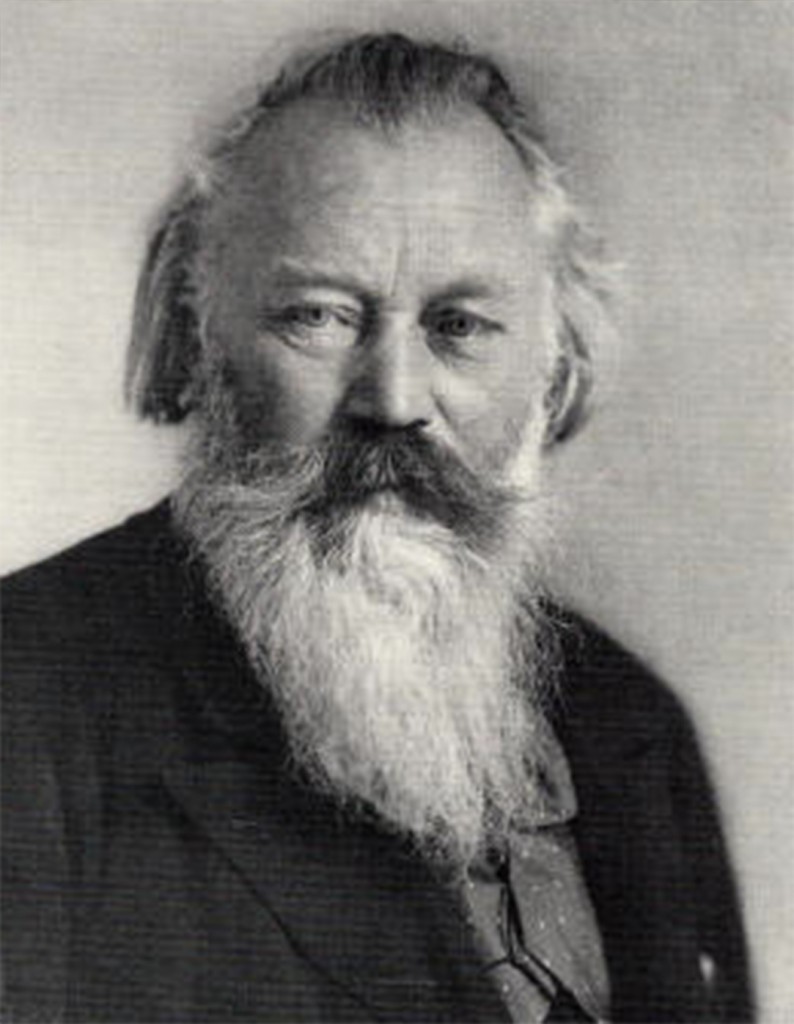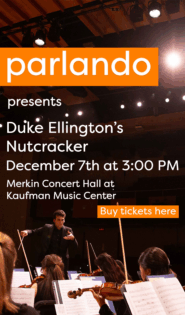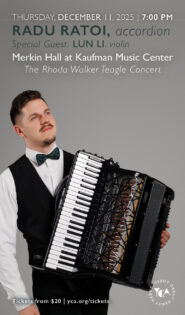Chamber Music Society delivers masterful Brahms survey

The Chamber Music Society of Lincoln Center performed an all-Brahms program Tuesday night at Alice Tully Hall.
Brahms seemed to excel at everything he touched. Some of this, of course, is due to a notorious perfectionist streak that resulted in the destruction of a great many works. But from symphonies to concerti to songs to choral works, he produced masterpieces in just about every genre at which he tried his hand.
It is particularly astonishing to hear his intensely intimate chamber works and reflect that this is the same composer who gave us the massive Fourth Symphony and Ein Deutsches Requiem. Even within his chamber literature Brahms showed exemplary versatility, composing for a wide variety of configurations, from the tried-and-true string quartet to the almost unheard-of (before or after) trio for horn, violin, and piano.
The Chamber Music Society of Lincoln Center is perfectly suited to a survey of Brahms’s work, able to mix and match from its long roster of musicians. CMS’s Tuesday night program at Alice Tully Hall, “Brahms the Master,” featured four different instrumentations out of five pieces, all told.
The Clarinet Trio in A minor that opened the program had its shortcomings—Timothy Eddy occasionally sounded encumbered by the cello part, and David Shifrin played with less emotional investment than his counterparts. Still, the piece was intelligently delivered, and romantic passion was not missing. The three players seemed to breathe as one in the Adagio, and Shai Wosner displayed a glowing touch and spacious phrasing at the piano. The scherzo was coy, even its melancholy moments exhibiting a wry half-smile. It was also fabulously intimate; the trio’s phrases did not arch wildly or widely, and their dynamics were contained. In the finale, Shifrin and Eddy struggled to find the music’s assertiveness, feeling more breathless than lively.
Though perhaps not as widely known as the Violin Concerto, Brahms’s three sonatas for violin and piano are indispensable works in the violin’s chamber repertoire; the third in particular is stunning. The Violin Sonata in D minor follows a battle-tested formula (Brooding Allegro, furious finale in the home key, with a singing adagio and plucky scherzo in between) but, like many of Brahms’s works, breathes new life into a familiar form.
For the sonata, Wosner was joined by Erin Keefe, and the pair gave a fiery, gutsy account of the piece. A flowing tempo and clear, but slightly pressed, tone gave the opening Allegro its crucial tautness. There was a constant pining quality in Keefe’s playing as she showed a range of colors, practically screaming at times, but never choking the sound. As the movement closed, there was a sense that a weighty statement had just been made, at a great expense of energy.
A blissful Adagio followed, that felt like a graceful, intimate dance between the two parts, occasionally unfurling into burning passion. A perky, sprightly tempo brought out the ethereal sparkle of the Scherzo, and the finale was all fire—noble, graceful fury at first, growing more and more manic as it gradually unraveled.
The evening’s only solo selections showed two sides of one pianist. Wosner approached the E-flat-major Intermezzo, Op. 117, No. 1, with a music-box simplicity that was nonetheless underpinned by tender sentiment, intelligently and modestly sculpted. In the Rhapsody, Op. 119, No. 4 (also in E-flat major) his virtuosic technique was evident, though “nimble” is not exactly the right word. There was a Lisztian heaviness to his playing here, when a little more bounce would have brought the music to full, playful life.
The Clarinet Quintet in B minor was a bold choice to end the program, not least because, at forty minutes by itself, it pushed the second half over the hour mark. No matter—in this sumptuous, sensitive performance, hardly a minute seemed wasted.
The first movement of this piece features the clarinet most strongly; at times, it feels almost as though we’re hearing a sonata for clarinet with string quartet accompaniment. Shifrin’s haunting treatment of the melody was up to the task of carrying the music, while the strings supplied vibrant support. Joining the players already featured were the taut-toned violinist Alexander Sitkovetsky and Mark Holloway, playing the viola with gruff sincerity.
In the Adagio the quintet’s balance was difficult to follow, as the strings were playing with mutes and had not adequately compensated. Still, they powerfully evoked the murky atmosphere of the writing. There was a gorgeous, autumnal calm to the Andantino introduction of the third movement, and Brahms’s quirky marking for the ensuing scherzo (Presto non assai—ma con sentimento) suddenly made perfect sense, with rolling, cantering energy.
The finale trumped all that had come before with a tugging, plaintive statement of the theme, and the variations that followed ranged through a variety of emotions and colors—In the first, Eddy’s mellow, almost shy cello playing made for an affecting plea, followed by the intense combativeness of the second. The fifth and final variation was most captivating at all, coalescing into a finely woven mesh before ending in what can only be described as heart-racing calm.
“Adventurous” might not be the first word that comes to mind when glancing at a program that reads “BRAHMS—BRAHMS—BRAHMS—BRAHMS.” But then, these are powerful works that earned their places in the canon. First-rate performances like these can make them sound as fresh as the first time we heard them.
The Chamber Music Society of Lincoln Center’s next program, at 6:30 p.m. Thursday in the Rose Studio, features the Dvořák Trio in F minor and the Brahms Violin Sonata in G major. chambermusicsociety.org




